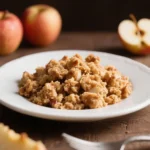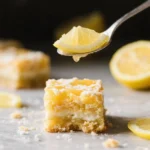Introduction
French Toast Casserole is a beloved breakfast and brunch staple that combines the rich, custardy goodness of traditional French toast with the ease and convenience of a casserole. Perfect for feeding a crowd or meal prepping for busy mornings, this dish transforms simple pantry ingredients into a decadent, golden-brown masterpiece baked to perfection. Whether you’re hosting a holiday gathering, treating your family to a weekend indulgence, or looking for a make-ahead breakfast solution, French Toast Casserole delivers on flavor, texture, and comfort in every bite.
The History
The roots of French toast can be traced back to ancient Rome, where a similar dish known as pan dulcis was made by soaking bread in milk and eggs before frying it. This humble method of reviving stale bread evolved over centuries across Europe, eventually becoming what we now recognize as French toast. The term “French toast” first appeared in 17th-century England, though the dish was already widespread in France under names like pain perdu, meaning “lost bread”—a reference to using up leftover or day-old loaves.
The casserole version emerged in American home cooking during the mid-20th century, coinciding with the popularity of oven-baked dishes and the rise of casseroles as convenient, one-dish meals. Home cooks began adapting the stovetop French toast recipe into an oven-friendly format, layering bread, custard, and flavorings in a baking dish for hands-free preparation. Today’s French Toast Casserole reflects both tradition and innovation—honoring its historical origins while embracing modern lifestyles that value simplicity, scalability, and delicious results.
Ingredients Breakdown
The magic of French Toast Casserole lies in its balance of simple yet rich ingredients, each playing a vital role in creating a moist, flavorful, and perfectly textured dish:
- Bread: Stale, thick-cut bread such as brioche, challah, or French loaf works best because it absorbs the custard without falling apart. These enriched breads add buttery richness and hold their structure during baking.
- Eggs: Provide protein structure and help create a custardy interior. They also contribute to browning and richness.
- Milk (or Half-and-Half/Cream): Forms the liquid base of the custard. Whole milk yields a creamy result, but half-and-half or heavy cream increases richness and silkiness.
- Sugar: Granulated sugar adds sweetness and aids in caramelization during baking. Brown sugar can be used for a deeper molasses flavor and added moisture.
- Vanilla Extract: Enhances overall flavor with warm, aromatic notes. Pure vanilla extract offers a more complex taste than imitation.
- Cinnamon: A classic spice that complements the sweetness and warmth of the dish. It also contributes to the golden color and cozy aroma.
- Butter: Melted butter enriches the custard and adds a luxurious mouthfeel. It also helps achieve a tender crumb and golden crust.
- Optional Add-ins: Include raisins, chopped apples, berries, chocolate chips, nuts, or even savory elements like cheese and bacon for customized variations.
Step-by-Step Recipe
- Prepare the Bread: Use 8–10 cups of cubed, day-old bread (about 1-inch pieces). Arrange the cubes evenly in a greased 9×13-inch baking dish. Slightly overlapping layers work well for even custard absorption.
- Make the Custard Mixture: In a large bowl, whisk together 8 large eggs until smooth. Gradually add 2 ½ cups whole milk (or half-and-half), ⅓ cup granulated sugar (or brown sugar), 2 teaspoons pure vanilla extract, 1 teaspoon ground cinnamon, and ¼ teaspoon salt. Whisk in ¼ cup melted unsalted butter until fully combined.
- Pour Over Bread: Slowly pour the custard mixture over the bread cubes, ensuring all pieces are coated. Use a spatula to gently press down any floating pieces so they soak up the liquid.
- Soak Overnight (Optional but Recommended): Cover the dish with plastic wrap and refrigerate for at least 4 hours, preferably overnight. This allows the bread to fully absorb the custard, resulting in a richer texture.
- Preheat Oven: Remove the casserole from the fridge 30 minutes before baking. Preheat oven to 350°F (175°C).
- Bake: Bake uncovered for 45–55 minutes, or until the center is set and the top is puffed and golden brown. A knife inserted in the center should come out clean.
- Cool Slightly: Let the casserole rest for 10–15 minutes before serving. This helps it firm up for cleaner slicing.
- Serve: Serve warm with maple syrup, powdered sugar, fresh fruit, whipped cream, or a dollop of yogurt.
Tips
- Use Stale Bread: Fresh bread tends to become mushy. Slightly dried-out bread holds up better and absorbs custard more effectively.
- Don’t Skip the Chill Time: Allowing the casserole to rest in the refrigerator ensures deep penetration of the custard, reducing the risk of a soggy center.
- Avoid Overbaking: Check for doneness starting at 45 minutes. Overbaking can dry out the edges while the center cooks through.
- Grease the Pan Well: Prevent sticking by using butter, non-stick spray, or lining the dish with parchment paper.
- Add Fruit Smartly: If including juicy fruits like berries, toss them in flour first or place them between layers to minimize excess moisture.
- Double the Batch: This casserole freezes beautifully. Cool completely, wrap tightly, and freeze for up to 3 months. Reheat in the oven at 325°F.
- Test Doneness: The internal temperature should reach 160°F when checked with a food thermometer.
Variations and Customizations
One of the greatest strengths of French Toast Casserole is its versatility. Here are some creative twists to suit different tastes and dietary needs:
- Savory Version: Omit sugar and vanilla. Add sautéed onions, spinach, diced ham, cooked sausage, or bacon. Top with shredded cheddar or gruyère cheese before baking.
- French Toast Strata: A savory-sweet hybrid with layers of bread, cheese, vegetables, and meat. Often includes mustard or Worcestershire for depth.
- Apple Cinnamon: Layer sliced apples (tossed in cinnamon and sugar) between bread cubes for a fall-inspired treat.
- Berry Bliss: Mix in blueberries, raspberries, or sliced strawberries for a burst of freshness and color.
- Chocolate Chip: Stir in semi-sweet or white chocolate chips before baking—ideal for kids or dessert lovers.
- Nutty Crunch: Sprinkle chopped pecans, walnuts, or almonds on top before baking for added texture.
- Dairy-Free: Substitute almond milk, oat milk, or coconut milk for dairy. Use plant-based butter and flax eggs if needed.
- Gluten-Free: Use gluten-free bread (preferably egg-rich varieties like gluten-free brioche) for those with sensitivities.
- Overnight Orange Cardamom: Infuse the custard with orange zest and a pinch of cardamom for a fragrant, exotic twist.
- Mini Casseroles: Prepare individual portions in ramekins for elegant presentation or portion control.
Health Considerations and Nutritional Value
While French Toast Casserole is undeniably indulgent, mindful modifications can make it more balanced:
- Calories: A typical serving (1/8 of a 9×13 pan) contains approximately 350–450 calories, depending on ingredients used.
- Fat Content: Ranges from 15–25g per serving, primarily from eggs, butter, and milk. Using low-fat milk and reducing butter can lower saturated fat.
- Protein: Provides around 10–12g per serving from eggs and milk, making it moderately satisfying.
- Carbohydrates: High in carbs (40–50g per serving), mostly from bread and sugar. Opt for whole grain bread and natural sweeteners like maple syrup or honey to improve nutritional profile.
- Sodium: Contains about 300–500mg per serving. Reduce salt or use unsalted butter to lower sodium levels.
- Make It Healthier:
- Swap half the sugar for mashed banana or unsweetened applesauce.
- Use egg whites or a combination of whole eggs and whites to reduce cholesterol.
- Add chia seeds or flaxseed to the custard for omega-3s and fiber.
- Incorporate oats or quinoa flakes into the bread layer for extra nutrients.
- Top with fresh fruit instead of syrup to boost vitamins and antioxidants.
Ingredients
- 8–10 cups cubed day-old brioche, challah, or French bread (1-inch cubes)
- 8 large eggs
- 2 ½ cups whole milk (or half-and-half for extra richness)
- ⅓ cup granulated sugar (or brown sugar)
- 2 teaspoons pure vanilla extract
- 1 teaspoon ground cinnamon
- ¼ teaspoon salt
- ¼ cup unsalted butter, melted
- Optional: ½ cup raisins, chopped apples, berries, chocolate chips, or nuts
- For serving: maple syrup, powdered sugar, fresh fruit, whipped cream
Directions
- Grease a 9×13-inch baking dish with butter or non-stick spray.
- Arrange bread cubes evenly in the dish, pressing down gently to form a compact layer.
- In a large mixing bowl, whisk eggs until frothy.
- Add milk, sugar, vanilla extract, cinnamon, salt, and melted butter. Whisk until smooth and well combined.
- Pour the custard mixture evenly over the bread cubes.
- Press down lightly with a spatula to ensure all bread is submerged.
- Cover with plastic wrap and refrigerate for at least 4 hours or overnight.
- Remove from refrigerator and let sit at room temperature for 30 minutes.
- Preheat oven to 350°F (175°C).
- Bake uncovered for 45–55 minutes, rotating halfway through, until puffed, golden brown, and a knife comes out clean.
- Let cool for 10–15 minutes before slicing.
- Serve warm with desired toppings.
FAQ
Can I make French Toast Casserole ahead of time?
Yes! Assemble it the night before, refrigerate, and bake it in the morning. It’s ideal for holiday breakfasts or entertaining.
Can I freeze French Toast Casserole?
Absolutely. Once baked and cooled, wrap tightly in foil and freeze for up to 3 months. Reheat in a 325°F oven until warmed through (about 30–40 minutes).
What kind of bread is best?
Rich, eggy breads like brioche or challah yield the best texture and flavor. Avoid very soft sandwich bread, which may turn mushy.
Can I make it without eggs?
Yes, though texture will change. Try a flax or chia egg substitute (1 tbsp ground flax + 3 tbsp water per egg), but expect a denser result.
Why is my casserole soggy in the middle?
This usually means insufficient soaking time or underbaking. Ensure the bread soaks for at least 4 hours and bake until the center reaches 160°F.
Can I add alcohol?
Yes! A splash of bourbon, rum, or Grand Marnier (1–2 tablespoons) enhances flavor. Add it to the custard mixture before pouring over bread.
Is French Toast Casserole safe for kids?
Yes, as long as it’s fully cooked. The eggs are baked thoroughly, eliminating raw egg concerns.
Summary
French Toast Casserole is a comforting, make-ahead breakfast dish that blends rich custard-soaked bread with warm spices and endless customization options. Baked to golden perfection, it’s perfect for feeding families, impressing guests, or enjoying cozy weekend mornings.










